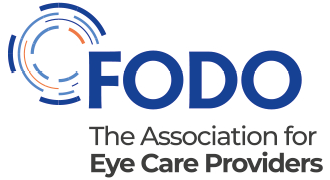Updates
Background
Drivers in the UK are required to meet minimum vision standards depending on the type of licence they hold.
Many occupations also have vision requirements, known as occupational vision standards. These are usually posted by the relevant regulatory body or employer.
This information tells you about the driving and occupational vision standards members ask us most about. If you would like us to add an occupation, please email [email protected].
The DVLA sets vision standards for drivers in England, Scotland and Wales (Northern Ireland's are set by the DVA).
Vision standards for drivers refer to Group 1 and Group 2 licence holders:
- Group 1 includes cars and motorcycles
- Group 2 includes large lorries (category C) and buses (category D).
Group 1 drivers - minimum standards
The DVLA states that all drivers must meet the following standards (aided or unaided):
- Visual acuity must be at least Snellen 6/12 with both eyes open or in the only eye if monocular
- Have a minimum field of vision as defined in legislation "of at least 120° on the horizontal measured using a target equivalent to the white Goldmann III4e settings. The extension should be at least 50º left and right. In addition, there should be no significant defect in the binocular field that encroaches within 20º of the fixation above or below the horizontal meridian".
The DVLA might also request a visual field assessment to determine fitness to drive. Learn more about visual field standards for Group 1 drivers at gov.uk.
People can also self-test their vision by reading the registration of a fixed vehicle in good daylight:
- At a distance of 20 metres with letters and numbers 79mm high by 50mm wide on a car registered since 1 September 2001
or
- At a distance of 20.5 metres with letters and numbers 79mm high by 57mm wide on a car registered before 1 September 2001.
Drivers unable to meet the standards above must not drive and must notify the DVLA.
Group 2 - higher vision standards
The risk posed by the vehicles in this group mean that higher vision standards are in place. Bus and lorry drivers (Group 2) must therefore have a visual acuity (aided where needed) of at least:
- Snellen 6/7.5 (Snellen decimal 0.8) in the better eye and
- Snellen 6/60 (Snellen decimal 0.1) in the poorer eye.
If spectacles are required to meet these standards, the total power in any meridian of either lens must not exceed +8 dioptres.
Group 2 drivers are also required to meet higher visual field standards. Learn about visual field standards for Group 2 drivers at gov.uk.
Other notes
There are also reporting and notification requirements for other eye conditions. You can read more about each of the following on gov.uk.
- Cataract
- Monocular vision
- Visual field defects (including glaucoma)
- Diplopia
- Nyctalopia
- Colour blindness
- Blepharospasm
- Nystagmus
DVA
The DVA provides this guide to visual standards for driving in Northern Ireland. The DVA also refers readers to the guidance provided by the DVLA as above.
Other guidance
The College of Optometrists also provides opensource professional guidance on examining patients who drive.
References
DVLA, September 2019, Assessing fitness to drive, accessed 25 November 2019
DVA, A guide to visual standards for drivers, accessed 25 November 2019.Vision standards for recruitment might vary so you should check requirements locally. The information below might be useful as a guide.
England and Wales
The Home Office eyesight standards.
Northern Ireland
Police Service Northern Ireland vision standards.
Scotland
Police Scotland eyesight standards.
The Civil Aviation Authority (CAA) Medical Department issues guidance on visual standards. Pilots are likely to attend with forms to be completed or tested by eye care providers specialising in this area. Head to the CAA's visual system guidance.

 Patients and public
Patients and public
 Policymakers
Policymakers Members
Members News and views
News and views
